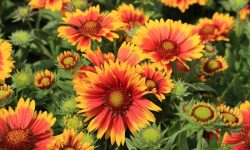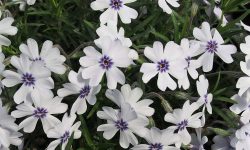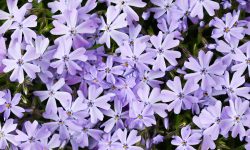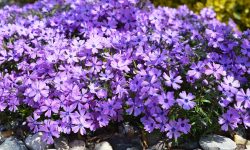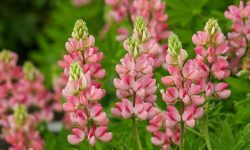Jasmine is a plant that instantly transforms any garden into a fragrant retreat. Its star-shaped flowers are not only beautiful but also filled with an intoxicating scent. Many gardeners dream of covering their fences, trellises, or patios with these stunning blooms.
Propagation is the most cost-effective way to fill your garden with jasmine. By creating new plants from an existing one, you save money while preserving the qualities you love. This method also ensures you know exactly what to expect from each plant. With proper care, your garden can be filled with blooms almost year-round.
Understanding Jasmine and Its Growth Habits
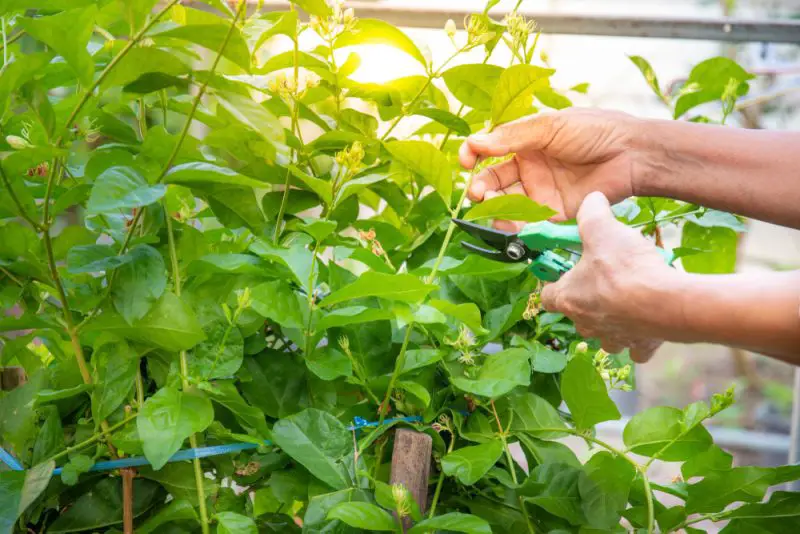
Key Characteristics of Jasmine Plants
Jasmine plants belong to the Oleaceae family, which also includes olives and lilacs. Depending on the species, they can be evergreen, keeping their leaves all year, or deciduous, shedding leaves during cooler months. Their growth habit varies, but many species feature slender, flexible stems that either climb with support or sprawl naturally over the ground. This versatility makes them suitable for different landscaping designs.
The flowers of jasmine are usually small, star-shaped, and often white or yellow, growing in tight clusters. Although small in size, their fragrance is powerful and can travel far, especially during warm evenings or early mornings. The leaves, usually bright to dark green, create a lush backdrop that enhances the blooms. Their simple or pinnate leaf structure adds texture and depth to the plant. Combined with their aromatic quality, jasmine plants are both ornamental and sensory delights.
Popular Jasmine Varieties for Propagation
Common jasmine (Jasminum officinale) is a fast-growing climber prized for its intense, sweet fragrance and abundant white flowers. It is often used to cover pergolas, trellises, and garden walls, creating a vertical display of blooms. Arabian jasmine (Jasminum sambac) is more compact and ideal for containers or smaller spaces. It produces larger, waxy white flowers and is famously used in perfumes, leis, and jasmine tea.
Winter jasmine (Jasminum nudiflorum) stands out for its bright yellow flowers, which appear during the cold season when most plants are dormant. It is hardy and tolerates lower temperatures better than other jasmine types. Some gardeners also grow Spanish jasmine (Jasminum grandiflorum), valued for its long blooming season and use in high-quality fragrances. Selecting varieties that match your climate and garden design goals ensures long-term success and continuous beauty.
Best Time to Propagate Jasmine
Ideal Seasons for Propagation
Spring is the most favorable season for propagating jasmine because plants are actively producing new growth. Warm soil and longer daylight hours create perfect conditions for quick root formation. Early summer also works well, especially in areas with mild temperatures and steady humidity.
Avoid trying to propagate in peak summer heat when plants may suffer water stress. Winter frost can damage tender cuttings and slow the rooting process. For the best outcome, select a mild, stable period when temperatures are consistent, and avoid extreme weather changes.
How Weather Affects Success
Weather directly influences the success of jasmine propagation. High humidity reduces moisture loss from leaves and keeps cuttings hydrated. However, excessive dampness can lead to fungal diseases and rot if air circulation is poor.
Stable daytime warmth combined with cooler nights promotes steady root development. Sudden cold snaps or heatwaves can shock tender cuttings and stunt growth. Observing and adjusting to local weather patterns will significantly increase your success rate.
Methods of Propagating Jasmine
Propagation from Stem Cuttings
Stem cuttings give quick results because the new plant grows from mature tissue. Select semi-hardwood stems that are neither too young nor too woody. These stems store enough nutrients to sustain early growth. Cut just below a leaf node, where root-forming cells are concentrated. Remove the lower leaves to prevent moisture loss and decay in the soil. Dip the base in rooting hormone to boost root initiation.
Use a sterile, sharp knife or pruning shears to avoid tearing plant tissue. Prepare a pot with light, well-draining soil such as a mix of sand and peat moss. Insert the cutting about five centimeters deep and firm the soil gently around it. Keep the soil slightly moist, never soggy. Provide bright but indirect sunlight to prevent leaf scorch. Maintain high humidity using a plastic cover until roots are established.
Propagation from Layering
Layering allows the stem to root while still attached to the parent plant. This keeps it supplied with water and sugars during the rooting stage. Choose a flexible, healthy stem without signs of disease. Bend it gently toward the soil and remove leaves from the section that will be buried. Lightly scrape the underside of the stem to expose fresh tissue for faster root growth.
Secure the stem to the soil with a U-shaped pin or a small stone. Cover the wounded section with moist soil, leaving the tip above ground. Keep the area watered but not waterlogged to avoid rot. Roots typically appear within a few weeks to months depending on the season. Once roots are strong, cut the stem from the parent plant. Transplant the new plant carefully to minimize shock.
Propagation from Seeds
Seeds are less common for jasmine propagation but offer unique genetic variations. They may produce plants with slightly different flower shapes, colors, or scents. Harvest seeds when the pods turn brown and start splitting. Clean and dry them to prevent fungal growth. Some species have hard seed coats that benefit from gentle scarification or soaking in warm water overnight.
Sow seeds in a shallow tray filled with a well-draining seed-starting mix. Keep the medium evenly moist, and maintain temperatures between 20–25°C for better germination. Place the tray in bright but indirect light. Seedlings may take several months to grow large enough for transplanting. This method requires patience but can be rewarding for developing new or rare varieties.
Preparing Tools and Materials
Successful jasmine propagation starts with clean, sharp tools. Pruning shears or a sterilized knife will prevent damage and reduce the risk of disease. Have a small trowel ready for preparing soil. Use pots or trays with drainage holes to avoid waterlogging. A spray bottle helps maintain moisture without disturbing the soil surface. Rooting hormone powder or gel can improve success rates.
Choose a light, well-draining potting mix made from peat moss, perlite, or coarse sand. Prepare plastic bags or a clear propagation dome to maintain humidity. Labels are useful for keeping track of varieties and dates. Keep everything within reach before starting to save time and avoid delays. A well-organized workspace helps ensure each cutting or seed receives proper care from the start.
Step-by-Step Guide to Propagating Jasmine from Cuttings
Step 1: Select Healthy Plant Material
Start by inspecting your jasmine plant closely. Choose stems that are free from yellow leaves, spots, or insect damage. Healthy stems should feel firm but not woody. Select semi-hardwood cuttings because they balance flexibility and nutrient storage. If layering, pick a stem that can bend to the soil without breaking.
For seed propagation, collect seeds from mature pods that have turned brown. Avoid green pods as seeds may be underdeveloped. Check for plumpness and discard any that look shriveled. Quality plant material ensures faster rooting, better disease resistance, and stronger growth after transplanting.
Step 2: Prepare the Growing Medium
Prepare a soil mix that is airy yet holds moisture. A combination of peat moss, perlite, and coarse sand is ideal. The mix should drain quickly to prevent waterlogging, which can cause root rot. For layering, loosen garden soil in the chosen spot so roots can form easily.
Sterilize potting soil by baking it in an oven at low heat or using commercial sterilized mix. This removes harmful fungi, bacteria, and insects. Avoid heavy garden soil unless improved with organic matter. Good soil preparation creates the perfect foundation for root development.
Step 3: Plant the Cutting, Layer, or Seed
When planting cuttings, remove leaves from the lower part and keep at least one node under the soil. Firm the soil gently so the stem stays upright. For layering, wound the underside of the stem slightly before covering it with soil to encourage rooting. Secure it with a wire or stone.
If planting seeds, sow them no deeper than twice their size. Cover lightly with soil and mist with water to avoid displacement. After planting, place the pot or garden section in bright, indirect light to stimulate growth without scorching tender tissues.
Step 4: Maintain Optimal Conditions
Cuttings need consistently moist soil and high humidity. Mist daily or use a plastic dome to trap moisture. Keep them in a warm location away from direct midday sun. For seeds, maintain steady warmth between 20–25°C for best germination.
Check the growing medium every day. If it dries out, roots can fail to form. If it stays too wet, fungus may develop. Provide gentle airflow to prevent mold without causing the soil to dry too fast. Stable conditions lead to stronger roots.
Step 5: Monitor Root Development
For cuttings, roots often appear in four to six weeks. Layering may take eight weeks or longer depending on temperature and humidity. Test by gently pulling the stem; resistance means roots are present. Avoid pulling too hard to prevent damage.
Seeds can take weeks or even months to sprout, depending on the variety. When young roots are visible or seedlings have strong leaves, prepare them for transplant. Patience during this stage ensures plants adapt better and bloom more vigorously in the future.
Caring for Jasmine Cuttings After Planting
Jasmine cuttings need consistent care to survive their first weeks. Keep the soil evenly moist but avoid standing water. Use a fine mist to prevent washing the soil away. Maintain humidity with a clear plastic cover or dome. Place them in bright, indirect sunlight to encourage photosynthesis without leaf burn. Check daily for signs of wilting or fungal growth. Remove any dead leaves immediately to keep the environment clean.
Provide good airflow to reduce disease risk but avoid strong winds that dry out the soil. Keep the temperature between 20–25°C for steady root growth. Avoid fertilizing until roots are established, as strong nutrients can burn delicate tissues. Be patient and monitor progress closely. Healthy, well-cared-for cuttings will reward you with faster growth and stronger stems ready for transplanting.
Transplanting Young Jasmine Plants
Choosing the Right Planting Location
Select a sunny location that receives at least six hours of light daily. Jasmine thrives in rich, well-draining soil with moderate moisture. If growing climbing types, install a trellis, pergola, or fence before planting. Support structures help direct growth and encourage more blooms.
Avoid planting in low-lying areas where water collects after rain. Strong winds can damage tender stems and young leaves. A sheltered spot with good air movement reduces fungal problems. Ensure enough space for roots to expand and stems to spread without competition from other plants.
Acclimating Plants to Outdoor Conditions
Harden young plants before moving them permanently outdoors. Begin by placing them outside in a shaded, sheltered area for two to three hours. Morning sun is gentler and prevents leaf scorch.
Gradually increase exposure time and sunlight over 7–14 days. Bring plants indoors at night during this period. This gradual adaptation reduces stress and transplant shock. Stronger plants establish faster and produce more vigorous growth.
Seasonal Care for Newly Propagated Jasmine
Spring and Summer Maintenance
In spring, jasmine produces rapid new shoots and flower buds. Water deeply once or twice a week, adjusting for rainfall. Keep soil moist but not waterlogged to avoid root diseases. Apply a balanced fertilizer with equal nitrogen, phosphorus, and potassium every four to six weeks. This supports strong foliage growth and abundant blooms. Watch for early signs of pests like aphids or whiteflies, and act promptly to control infestations.
During summer, prune lightly to remove weak or tangled stems. This improves airflow and reduces fungal risk. Deadhead faded flowers to encourage continuous blooming throughout the season. Provide full morning sun and light afternoon shade in very hot climates. Maintain steady watering during dry periods. Consistent summer care ensures the plant has enough energy to produce flowers well into autumn.
Fall and Winter Protection
In autumn, begin reducing watering to match the plant’s slower growth rate. Stop fertilizing to allow stems to harden before winter. For potted jasmine, move plants indoors before night temperatures fall below 10°C. Place them near a south-facing window with bright but indirect sunlight. Keep indoor air humidity moderate to prevent leaf drop.
Outdoor jasmine needs extra root protection. Apply a thick 5–8 cm mulch layer around the base, using straw, bark, or compost. Avoid covering the crown directly to prevent rot. In regions with harsh winters, wrap the lower stems with burlap to shield against wind and frost. Monitor plants during warm spells and water lightly if the soil becomes completely dry. Proper winter care ensures vigorous regrowth in spring.
Troubleshooting Propagation Problems
Common Issues with Cuttings
Wilting cuttings signal water loss faster than uptake. Raise humidity to 75–90% with a clear dome. Vent daily to release condensation. Lightly mist leaves, not soil. Provide bright, indirect light to limit transpiration. Trim large leaves by half to reduce surface area. Remove buds and flowers to redirect energy to roots. Shade with 30–40% cloth if light is harsh.
Rotting bases indicate excess moisture and poor oxygen at the node. Use a very airy medium with perlite and coarse sand. Water to damp, then let the surface dry slightly. Bottom-water to avoid soggy stems. Sterilize pots and tools with 70% alcohol. Drench once with a diluted 3% hydrogen peroxide solution if rot appears. Improve airflow with a small fan. Keep media warm at 22–25°C.
Slow or no rooting often relates to temperature or hormones. Add gentle bottom heat to keep media stable. Recut the base just below a node. Lightly wound one side to expose cambium. Dip in IBA rooting gel at low strength. Maintain a 12–14 hour photoperiod with soft light. Check pH near 6.0–6.5 for nutrient availability. Use rain or filtered water if salts accumulate.
Yellowing or leaf drop suggests stress from extremes. Avoid midday sun on tender cuttings. Do not fertilize until roots form. If tips burn, salts are high or humidity is low. Leach the medium with clear water. Restore humidity and review mist frequency. Stable care prevents setbacks and speeds establishment.
Dealing with Pests and Diseases
Aphids, whiteflies, and thrips attack soft tissue on cuttings. Look for honeydew, leaf curl, or silvery scarring. Spider mites cause fine webbing and stippled leaves. Inspect the undersides with a hand lens. Isolate new plants to protect the batch. Yellow sticky cards help monitor flying pests. Early detection keeps outbreaks small.
Start with the gentlest controls first. Use insecticidal soap for aphids and whiteflies. Apply neem or horticultural oil for mites, covering leaf undersides. Treat at dusk to protect pollinators and reduce burn. Repeat every 5–7 days through one full life cycle. For thrips, rotate with spinosad if needed. Rinse residues after treatments to keep stomata clear.
Damping-off and Botrytis thrive in wet, still air. Keep foliage dry and water early in the day. Space pots for airflow and vent humidity domes daily. Remove fallen leaves quickly. Consider a biological drench with Bacillus subtilis or Trichoderma. Avoid copper on tender cuttings, which can scorch tissue. Potassium bicarbonate can check early powdery mildew.
Root rot follows saturated media and cold roots. Improve drainage and add more perlite. Warm the medium and reduce watering frequency. Let the top centimeter dry before watering again. If fungus gnats appear, dry the surface and add sticky traps. Beneficial nematodes target larvae in the medium. Correct moisture first, then re-evaluate pest pressure.
Encouraging More Blooms After Propagation
Fertilizing for Flower Production
To encourage jasmine to produce abundant flowers, use a fertilizer rich in phosphorus and potassium. These nutrients support strong bud formation and enhance fragrance. Begin feeding in early spring when new growth appears, and continue every four to six weeks during the growing season. Water the plant before and after fertilizing to prevent root burn.
Avoid excess nitrogen, as it stimulates leafy growth at the expense of blooms. Choose a balanced formula with a higher middle number in the NPK ratio. Organic options like bone meal or composted manure release nutrients slowly and improve soil health. Consistent, targeted feeding keeps the plant producing vibrant and fragrant flowers throughout the season.
Pruning to Boost Blooming
Prune jasmine after the main flowering period ends to encourage new shoots that will bear buds. Remove dead, weak, or crossing stems to improve airflow and light penetration. This reduces disease risk and helps the plant channel energy toward healthy branches.
Regular pruning also keeps the plant’s size in check and prevents it from becoming too woody. Focus on cutting just above a leaf node to stimulate side shoots. With each cycle of pruning and regrowth, the plant becomes bushier and produces more flowers. Over time, this practice leads to stronger, healthier jasmine with a longer blooming season.
Expert Tips for Long-Term Jasmine Success
Maximizing Fragrance in the Garden
Place jasmine in spots where air currents carry the scent, such as patios, garden paths, or open windows. The fragrance is most intense in the evening, so evening gatherings can be more enjoyable. Consider planting near entrances to greet visitors with a pleasant aroma.
Combine jasmine with other fragrant plants like lavender, gardenia, or night-blooming jasmine to create a multi-layered scent profile. This combination can fill your garden with fragrance at different times of the day. Use containers for some plants so you can move them to the best spots for enjoying their scent.
Extending the Blooming Season
Select jasmine varieties with staggered bloom times, such as Jasminum officinale for summer and Jasminum nudiflorum for winter. This ensures fragrance nearly year-round. Planting multiple types creates visual and aromatic diversity.
Deadhead spent flowers to stimulate the plant to produce more blooms. Maintain consistent watering and monthly feeding during the growing season. Protect plants from stress caused by pests or poor weather, as healthy plants naturally flower longer.
FAQ – Common Questions About Propagating Jasmine
How long does it take for jasmine cuttings to root?
Jasmine cuttings usually take 4–8 weeks to develop strong roots. The exact time depends on the variety, temperature, and humidity. Using rooting hormone and maintaining steady moisture can help speed up rooting.
Can jasmine be propagated year-round?
Spring and early summer are the best times for propagation because jasmine is in active growth. Avoid winter and extreme summer heat, as these conditions can stress cuttings and slow root development.
Why are my jasmine cuttings wilting even after watering?
Wilting often means humidity is too low or roots are not yet established. Maintain higher humidity by misting or covering with a humidity dome. Place cuttings in bright, indirect light for best recovery.
How long until jasmine grown from cuttings blooms?
Most jasmine propagated from cuttings will bloom in 6–12 months. Proper feeding with phosphorus-rich fertilizer and regular pruning can encourage earlier and heavier blooming.
Should I propagate jasmine from seeds?
Seed propagation is possible but slower than using cuttings or layering. Not all jasmine varieties produce viable seeds, and seedlings may differ from the parent plant in growth and fragrance.
Conclusion
Propagating jasmine is more than just creating new plants — it’s about filling your garden with beauty, fragrance, and life. With the right timing, careful preparation, and attentive aftercare, even a small cutting can grow into a lush, blooming vine. Every new flower rewards your effort with its captivating scent, turning ordinary spaces into a serene retreat.
Whether you choose stem cuttings, layering, or seeds, the key is patience and consistency. Jasmine responds generously to proper care, offering months of blooms and unforgettable fragrance. Start your propagation journey today, and soon you’ll enjoy a garden that delights the senses season after season.

